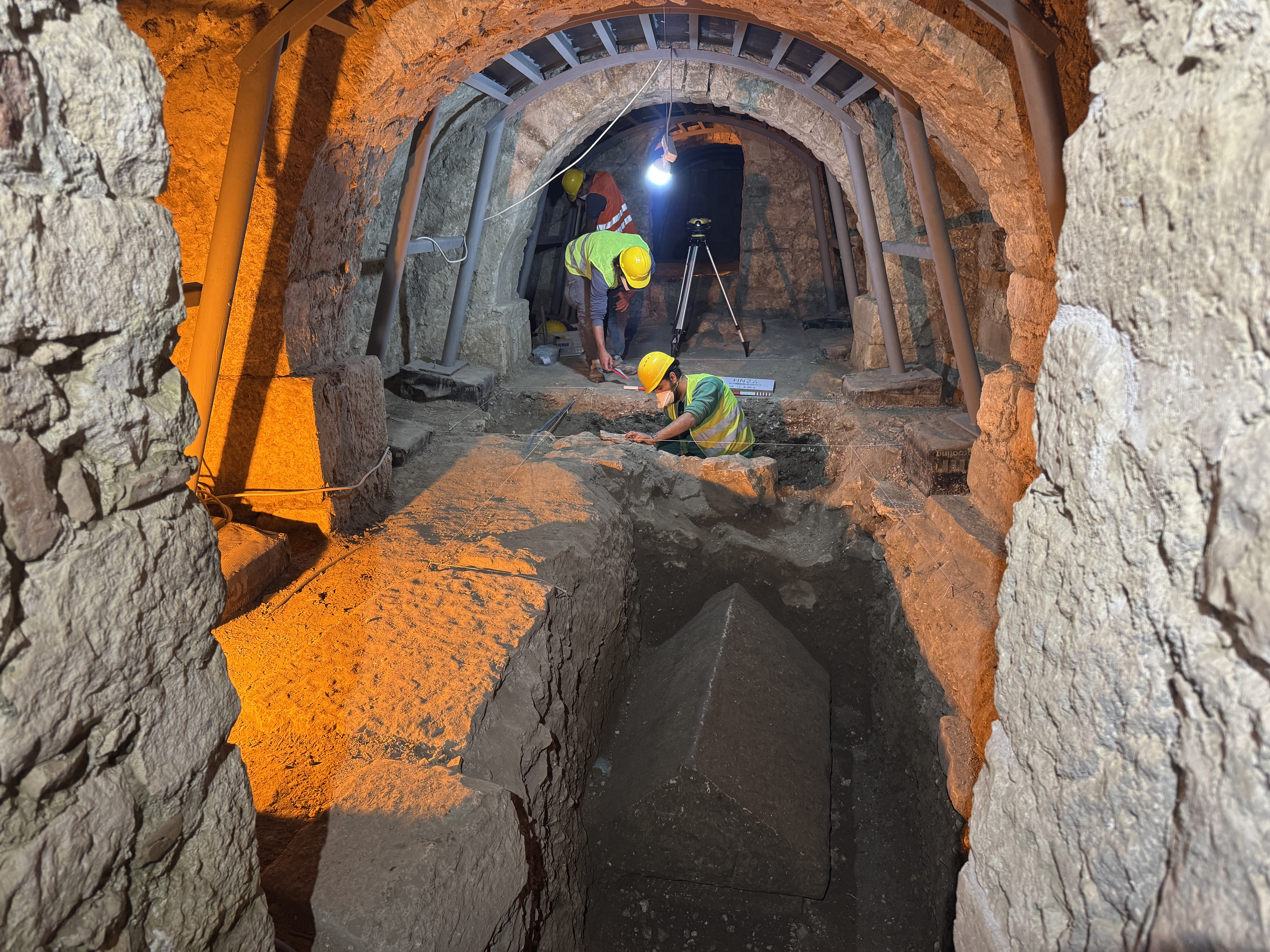
Archaeologists have unearthed a sarcophagus during ongoing excavation work at the St. Nicholas Church in Demre, Antalya, shedding light on the ancient past of the historical site.
The church, believed to be located near the burial place of St. Nicholas, the Bishop of Myra and the inspiration for the modern-day Santa Claus, has been a site of important archaeological findings for years.
The discovery was made in the church's two-story annex, which has been under excavation since 1989.
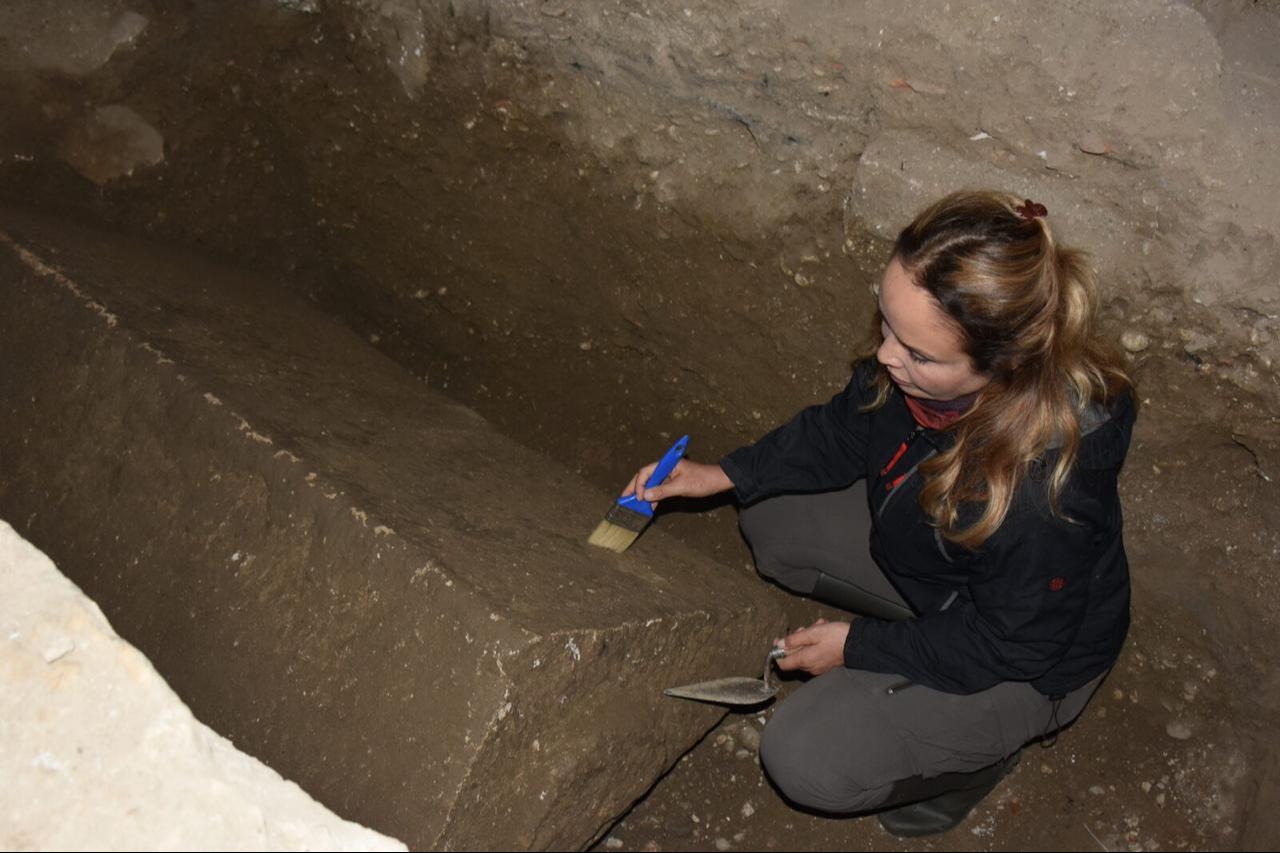
The excavation, led by Associate Professor Ebru Fatma Findik from Hatay Mustafa Kemal University, is part of the "Legacy for the Future Project" initiated by the Ministry of Culture and Tourism. The latest excavations, which have been ongoing for two years, have now revealed a sarcophagus made from local limestone. The sarcophagus, measuring approximately 2 meters in length, is believed to be partially buried 1.5-2 meters underground. Its design features a raised lid and a pitched roof, consistent with other sarcophagi from the region.
Findik explained that prior to discovering the sarcophagus, they had found animal bones and numerous fragments of clay lamps, leading them to believe they were dealing with a burial site.
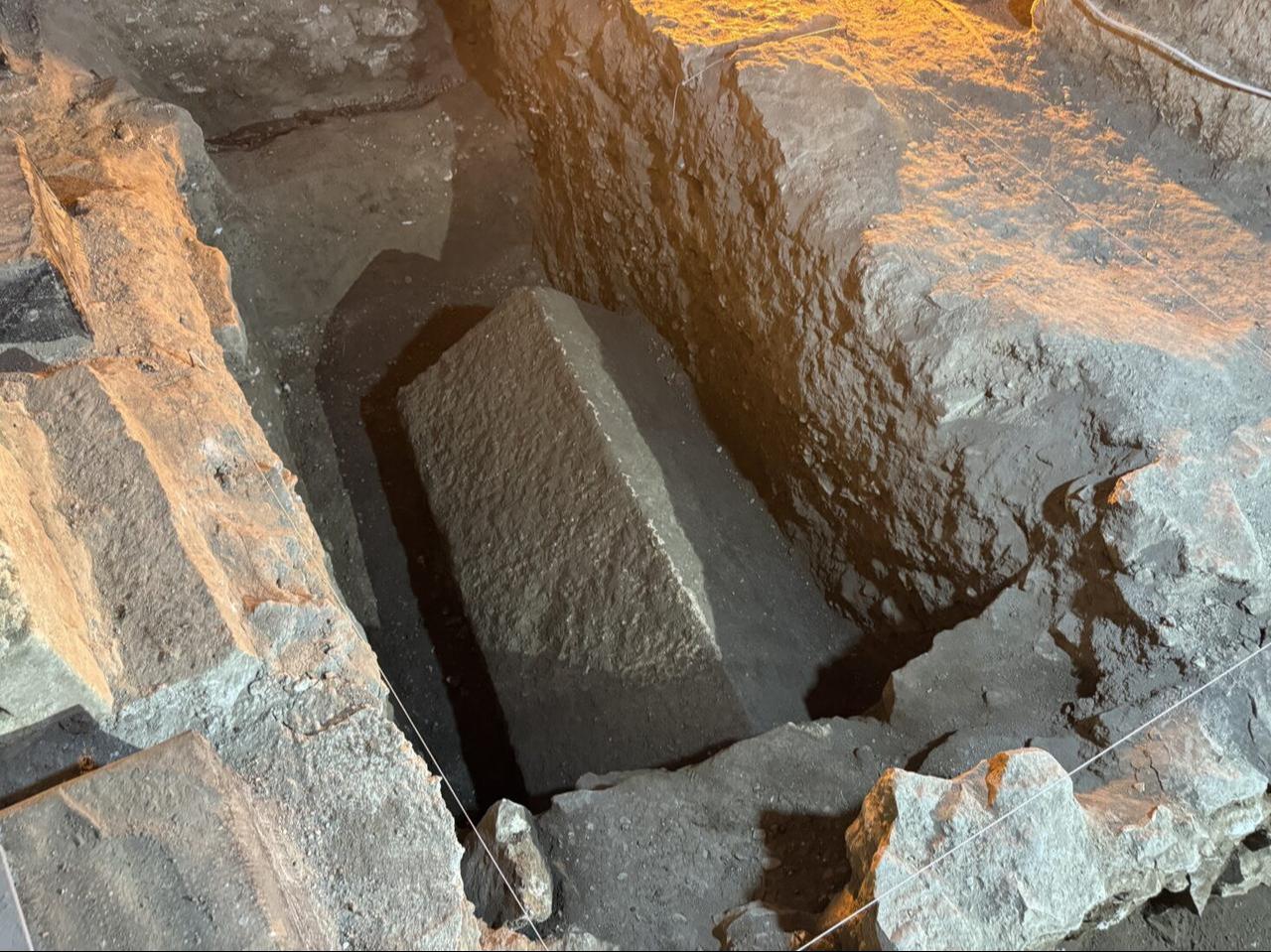
One of the key objectives of the excavation team is to uncover any inscriptions on the sarcophagus, which could provide crucial insights into its date and the identity of the deceased.
"Our biggest hope is to find an inscription on the sarcophagus. This would help clarify the burial contents and allow us to determine the exact period it dates to," Findik stated. While the lid of the sarcophagus has been uncovered, only a small section of the burial chamber has been exposed, and further excavation is expected to reveal more details in the coming months.

The discovery holds particular significance for understanding the final resting place of St. Nicholas. Historical sources have long speculated about the location of his tomb, with some suggesting that he was buried near the sacred area of Myra. The proximity of the sarcophagus to the church, thought to be built on or near his burial site, lends weight to the theory that this could indeed be the sacred area mentioned in ancient texts.
"Some sources suggest that St. Nicholas was buried near the sacred area of the city of Myra. The fact that we have found a sarcophagus near the church, which is thought to house his tomb, may indicate that this is indeed the sacred area we have been searching for. This is a significant archaeological confirmation of historical sources regarding the burial place of St. Nicholas," Findik commented.
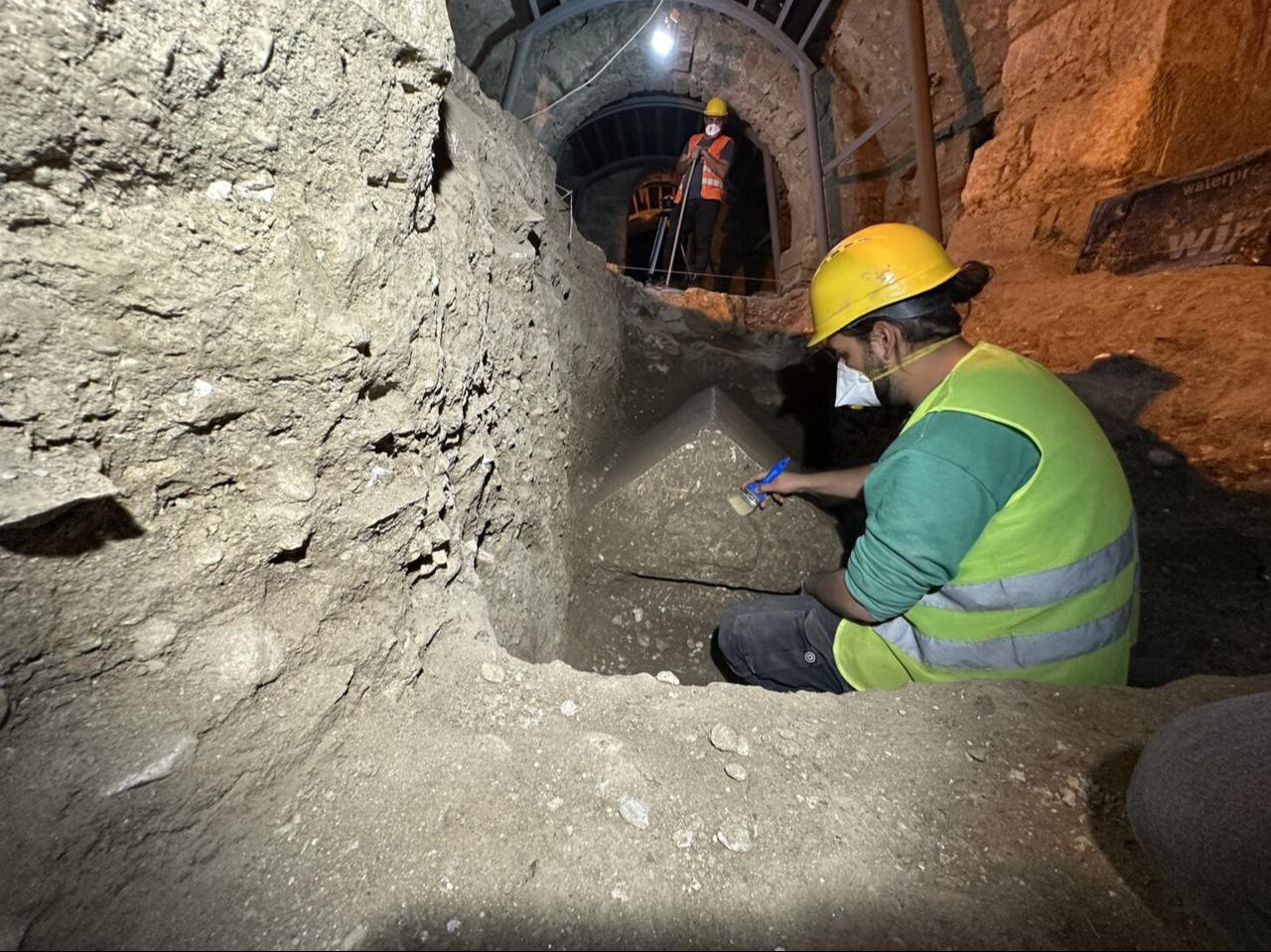
The find is an important development for both historical and religious communities, offering a deeper understanding of St. Nicholas' final resting place.
As the excavation continues, researchers aim to answer many lingering questions about the church and the tomb of one of early Christianity’s most significant figures.
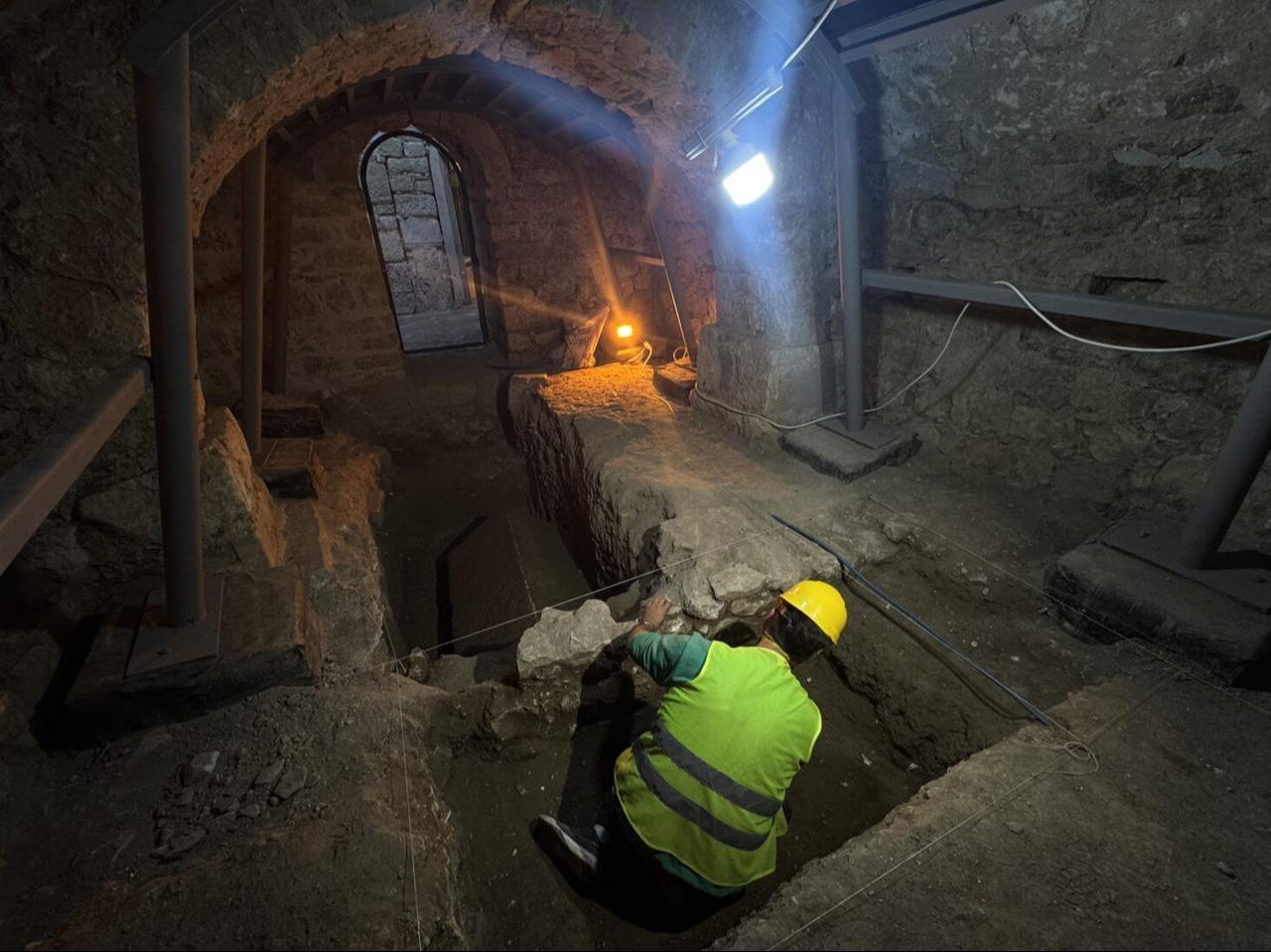
The Saint Nicholas Church in Demre was added to UNESCO’s Tentative Heritage List in 2000, solidifying its importance as a cultural and historical treasure.
Each year, this sacred site hosts countless visitors, especially Russian tourists, making it a key destination for faith tourism.
The discovery of the sarcophagus at St. Nicholas Church brings researchers closer to solving the mystery of his burial.
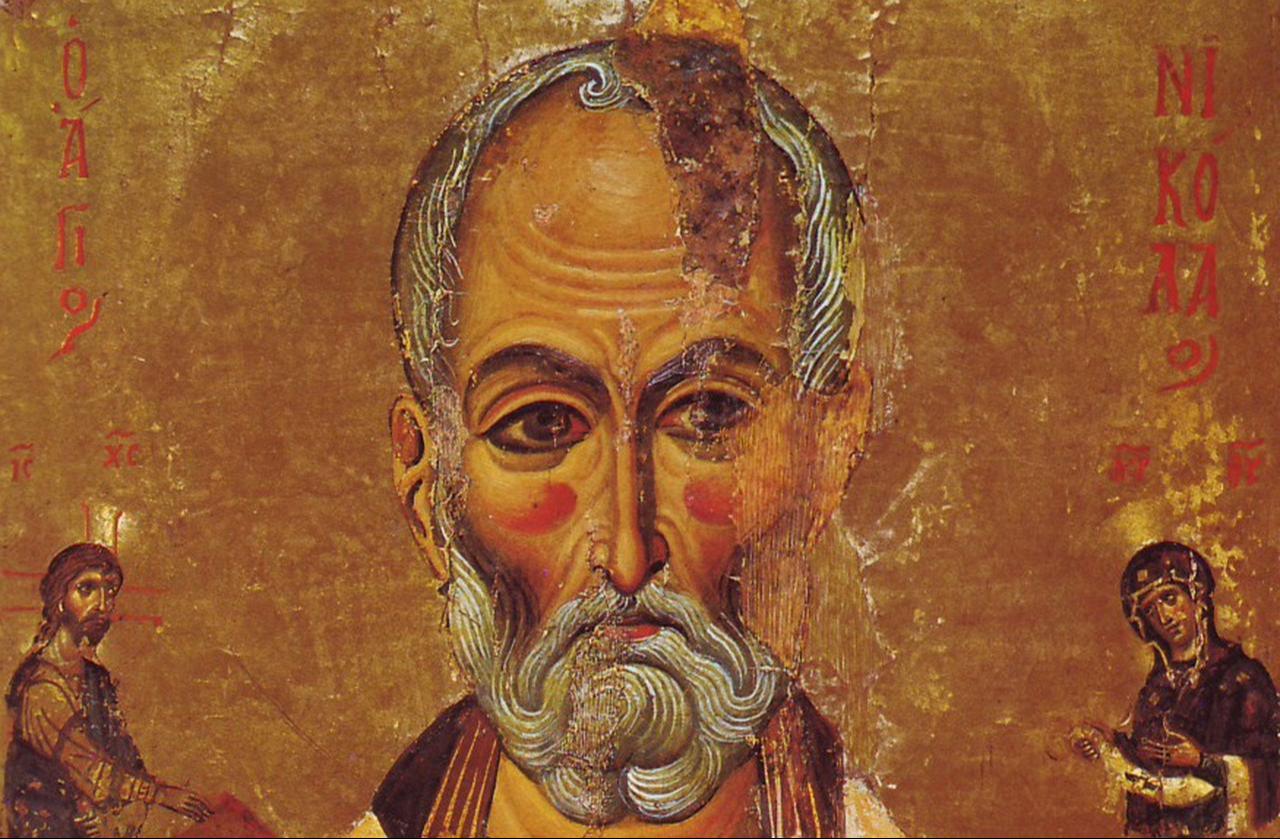
Born in the late third century A.D. in Patara, a thriving city within the Lycian civilization, Saint Nicholas was raised in a wealthy and devout Christian family and would go on to inspire the character of Santa Claus.
He is regarded as the protector of sailors because he calmed a storm while on a journey to Jerusalem. It is said that in Myra, located in present-day Demre in Antalya, he helped the poor, especially girls unable to marry due to the lack of a dowry. To avoid humiliating the poor, he would secretly leave money in their homes at night.
"In icons, St. Nicholas is depicted holding three gold balls, and the tradition of hanging stockings by the chimney for Santa Claus to drop gifts originates from this," Professor Ekrem Bugra Ekinci explains.
St. Nicholas was appointed as the bishop of Myra at one point. He faced challenges and was imprisoned for spreading the teachings of Prophet Jesus (peace upon him). He passed away in 342 while in prison. During the Crusades in 1087, merchants from Bari, Italy, took his bones to their homeland, where they buried them in a basilica built in his honor. Today, a fragment of his bones is preserved in the Antalya Museum. Since he lived before the arrival of Prophet Muhammad (peace upon him), Muslims regard him as a righteous believer, according to Ekinci.
The transformation of Saint Nicholas into the globally recognized Santa Claus began centuries after his death. The evolution from his Anatolian origins to his modern image gained momentum during the Middle Ages in Europe, particularly through the Dutch whose children would place their wooden shoes by the fireplace, hoping for gifts. The first Dutch ship carrying migrants to America featured a bust of the saint on its prow. One of the first churches in America was named after him. The Dutch called him Sint Nikolas, which evolved into Sinterklass and eventually Santa Claus.
William Gilley depicted St. Nicholas as Santa Claus in a children's poem, portraying him with a flying sleigh drawn by eight reindeer. Interestingly, Vikings believed that their god Odin descended to Earth every December on an eight-legged horse named Sleipnir to help the poor. This bears a striking resemblance to Santa’s sleigh with eight reindeer. Similar legends can also be found in Roman and German mythology.
Hervey's 1837 bestsellerThe Book of Christmasintroduced Santa Claus to the world. Between 1863 and 1866, Thomas Nast drew illustrations of Santa Claus forHarper's Weekly, portraying him with a red suit, white beard, and a sleigh pulled by reindeer. These illustrations were requested by President Abraham Lincoln to boost soldiers' morale during Christmas in the Civil War.
In 1924, Swedish artist Haddon Sundblom used this caricature for a Coca-Cola advertisement. According to Ekinci, this helped the beverage, previously banned from advertising to children due to its cocaine content, appeal to younger audiences. In 1939, Santa Claus appeared in a similar outfit in a promotional booklet for a Chicago department store. That year, 2.5 million copies of the booklet were distributed.